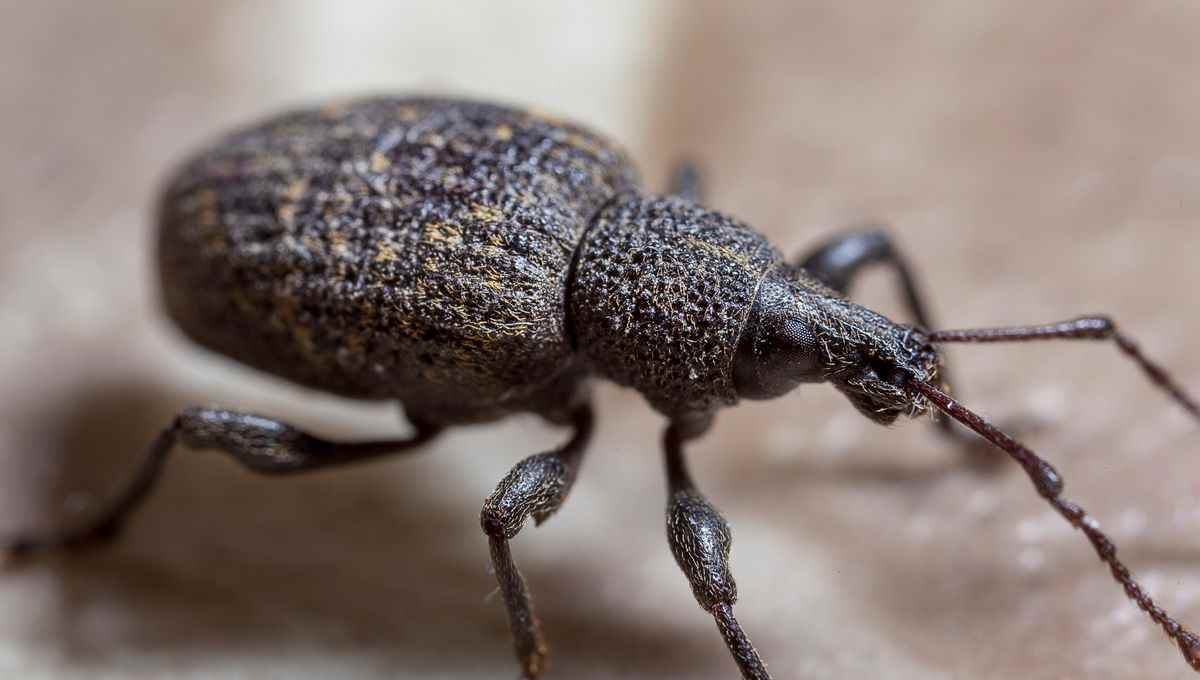What is this insect?
It is a beetle of the family Curculionoideae which has the particularity of not being able to fly because its elytra are welded. It therefore moves only by walking, but it is very often transported in the form of eggs or larvae by humans inside land and compost.
It is also under the surface of the ground that it is the most dangerous.
– Jacques Ginet
The damage:
Besides the (unsightly but not lethal) punching of the leaves of certain species of plants and shrubs which occurs at night, it is a very discreet insect which spends its day hidden under the surface of the soil and which only comes out to feed, it is the larvae that do the most damage.
The larvae:
The larvae are very small grubs that live and feed mainly on the soft tissues of plant crowns. This is what makes them dangerous because the collar of the plants is the crossroads of all the sap vessels, rising or falling. We then see during the summer entire clumps of impatiens, for example, wither as soon as the temperature rises despite abundant watering.
Often we see plants wither during the summer and we mistakenly attribute this damage to fungi or bacteria, but the uprooting of the plants and the search in the clods very quickly highlight these small white and orange worms.

– Jacques Ginet
Its biology:
The species are very numerous, more than 350, but it is the vine weevil which is the most common here.
The adult emerges from the ground in late spring, feeds on the leaves which it punches in a very recognizable way. Throughout the summer the females will lay eggs buried at the foot of certain species of plants and shrubs.
Small grubs with orange heads will hatch, also quite recognizable.
These very voracious larvae will complete their entire larval cycle during the summer and fall.
Then they will overwinter as nymphs and begin a parasitic cycle again in the spring.
The fight:
With the exception of specific synthetic insecticides for soil treatment, only nematodes can get out of the infernal circle of repetitive contamination by these weevils.
The most effective are:
Heterorhabditis megidis and bacteriophora
Steinernema carpocapsae
Steinernema kraussei for treatment in cooler weather (it works down to a soil temperature of 5°C.
Steinernema feltiae can also be useful but in principle it is rather used against scarids.
WARNING :
To be effective, nematodes must be disseminated on fairly warm soils (at least 10°C) and above all very humid. It is necessary to create this humidity by preventive waterings, or directly after good rains, and to continue to water at least one week after their installation.
For good effectiveness, some very dry summers followed by the cool second half of August require gardeners to properly target the periods of intervention.
Ask all your questions during the gardening program on Sunday morning on France bleu Isère from 9 a.m. to 10 a.m. by calling 04 76 46 45 45
